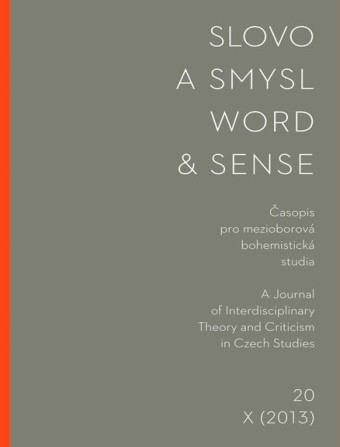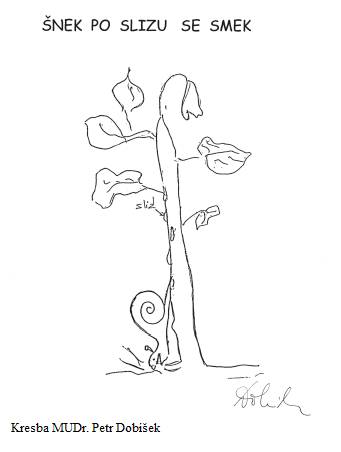Editorial
The topic of this issue is trash literature and popular culture. The issue presents the output achieved so far within a long‑term research project focusing on several distinct areas:
1) Research into “old trash”, i.e. the texts of classical, mediaeval and early modern literatura that did fulfill or could have fulfilled the aim of diversion, or an otherwise “lowly function”. Given the lack of material regarding their possible readings and interpretations and their position within the contemporary culture, the analysis of these texts focuses on their “anatomy” and on the search for the “roots“ of trash literature and culture, as it was then constituted in the modern era. Rather than to detect influences or determinate temporal priorities, the goal here is to analyze older literature from the viewpoint of potential analogies and similarities with modern material, as well as to reflect on the limits and the non‑applicability of certain entrenched frames and concepts onto material which follows its own and independent rules. Here belongs Sylva Fischerová’s study of the classical novel, Iva Adámková’s article on the early Christial martyrological texts, Lucie Doležalová’s contribution on “lowly” mediaeval Latin literature, Matouš Jaluška’s study of the image of noxious reading in the troubadours, Jiří Starý’s analysis of trash elements in the Old Nordic lying sagas, and Juan A. Sánchez’s interpretation of Amadis of Wales as popular reading.
2) Research into modern trash literature and culture. Here, the concept of trash is viewed as a value‑laden term that can be used to classify a work as belonging among “lowly” productions. However, the strong verdict proclaimed about a work by means of the label “trash, trashy” covers the embarrasment regarding the conditions where and due to what a work turns into trash. Is it exclusively a matter of ordering, of the inner composition of the work? Or is it rather due to a decision to read and perceive a particular work as trash? The impossibility of achieving a universal solution and answer is indicated already by the multitude of labels, often viewed as synonyms, but often also used as distinct, in order to classify the given material into various categories: junk fiction, trash fiction, pulp fiction, formula literature, genre fiction, cult fiction, popular literature, trivial literature, mass fiction, Trivialliteratur, Schemaliteratur, Massenliteratur, Populäre Literatur, Schundliteratur, Unterhaltungsliteratur etc. The interaction between the composition of the text and the readerly construal of meanings and influences is analyzed (with the use of various literary as well as non‑literary material from both Czech and international context) by Kamil Činátl, Štěpán Zbytovský, Tomáš Jirsa, Petr Kopal, Josef Hrdlička, Lukáš Borovička, Blanka Činátlová and Tomáš Vučka.
3) The significance of pop‑culture. Once we accept the notion that the elements of trash can be situated in the context (rather than the text) of the work, the analysis of trash thus gains access to broader contextual platforms, often embraced by the unifying term “pop‑culture”. Here, textual analysis broadens itself into a historical or sociological one, the cultural process gets permeated by the development and the functioning of media, as well as by the history of everyday existence, and any homogenic view of culture is fractured by a plurality of heterogeneous subcultures. This perspective is represented here primarily by Jakub Machek, Jan Lomíček and Ondřej Daniel. The methods of analysing popular and mass culture are, from a more general viewpoint, also the topic of the interview with John Fiske in our Question For…
4) The theoretical capturing of trash and pop‑culture. The question whether the determinant features of trash are to be found in the text itself, or rather outside of it, in its context, stimulates — beyond material analyses — attempts to resolve it in a theoretical manner (while there is no doubt that both approaches, the material and the theoretical one, meet and overlap). Pavel Zahrádka’s article focuses on value‑laden aesthetic categories, Kateřina Kirkosová’s study passes through an entire gamut of conceptual categories with a view to a possible revision of their contents and their use, Josef Švéda considers popular culture in the light of ideology and class as global concepts. The productivity of Bourdieu’s concept of the cultural field is demonstrated both by the contribution of Jan Dlask and in Donald Broady’s essay A Set of Tools for the Study of the Field which we offer here in translation.
Critical Views, as is standard in Slovo a smysl, reacts to current publications and other events beyond the thematic framework of the issue.
Petr A. Bílek
This volume has been produced with editorial assistance of Tomáš Vučka whose participation deserves to be acknowledged.
All the articles published in this volume under Studies and Sketches sections have been published as a part of the Charles University Research Development Programme No. 09 Literature and Arts in Intercultural Contexts; Sub-programme: Formula Fiction: ‘Trivial’ and ‘Pulp’ Genres in the Context of Historical Development and Concepts of Popular Culture.


